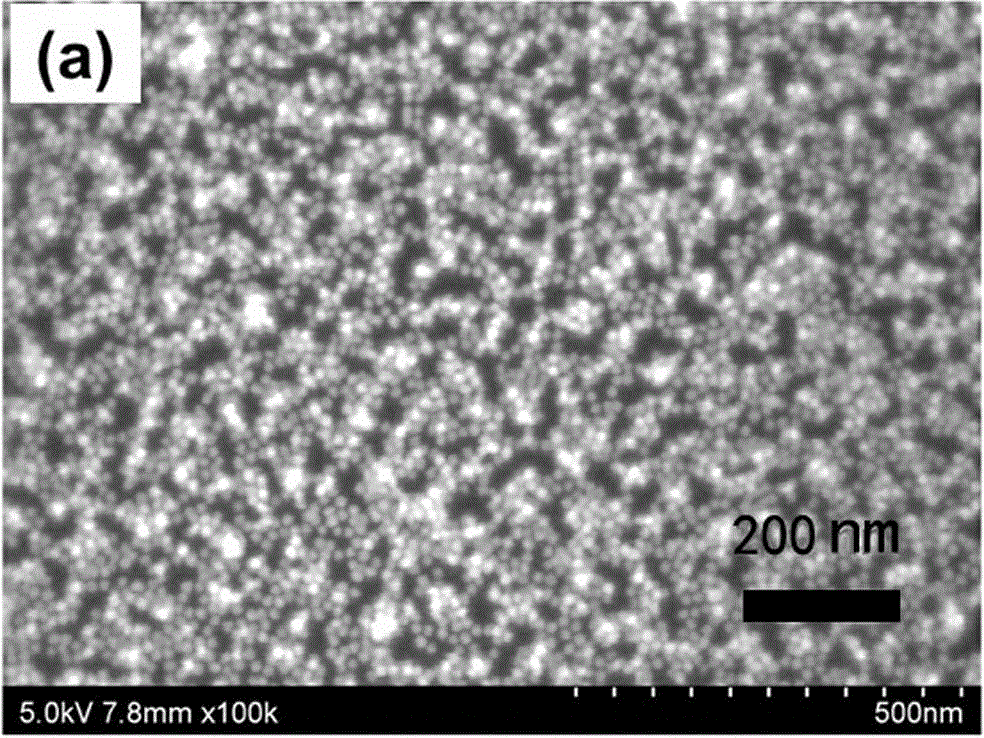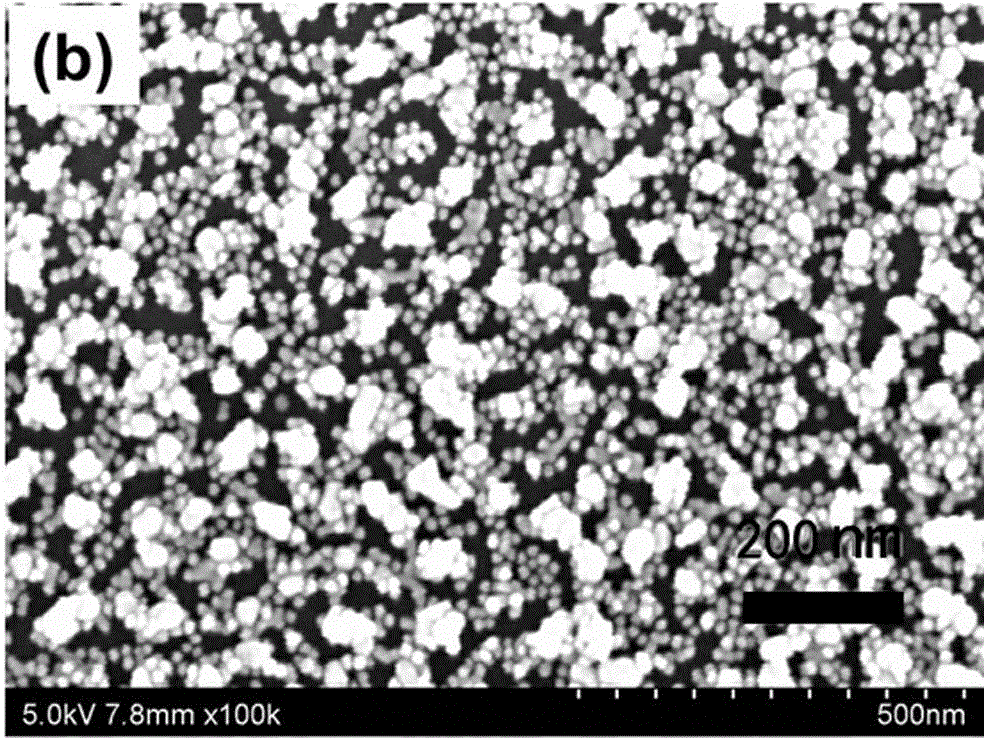Performance-controllable layer-by-layer assembled nanoparticle SERS substrate and preparation method thereof
A technology of layer-by-layer assembly and nano-particles, which is applied in the direction of measuring devices, instruments, and material analysis through optical means, can solve the problems of difficult SERS performance, and achieve the effect of simple and effective methods, wide applicability, and good SERS activity
- Summary
- Abstract
- Description
- Claims
- Application Information
AI Technical Summary
Problems solved by technology
Method used
Image
Examples
Embodiment 1
[0018] 1. Preparation of negatively charged citrate-protected gold nanoparticles of different sizes: Add 0.5 ml of 1% chloroauric acid aqueous solution to 50 ml of water and heat to boil, then add 2 ml and 0.65 ml respectively The sodium citrate aqueous solution with a mass fraction of 1% was heated and reacted for 15 minutes to obtain gold nanoparticle aqueous solutions with particle diameters of 17 nm (referred to as small gold nanoparticles) and 43 nm (referred to as large gold nanoparticles). The gold nanoparticle aqueous solution can be directly used for subsequent layer-by-layer assembly.
[0019] 2. Layer-by-layer assembly of gold nanoparticles and polyelectrolytes: first, the quartz sheet is subjected to plasma pretreatment to make its surface have polar groups; then the quartz sheet is immersed in polydienylpropylenedimethylammonium chloride ( PDDA) aqueous solution (1mg / ml) for 30 minutes, rinse with deionized water for 1 minute after taking it out; then immerse the ...
Embodiment 2
[0022] 1. Preparation of negatively charged citrate-protected gold nanoparticles of different sizes: Add 0.5 ml of 1% chloroauric acid aqueous solution to 50 ml of water and heat to boil, then add 2 ml and 0.65 ml respectively The sodium citrate aqueous solution with a mass fraction of 1% was heated and reacted for 15 minutes to obtain gold nanoparticle aqueous solutions with particle diameters of 17 nm (referred to as small gold nanoparticles) and 43 nm (referred to as large gold nanoparticles). The gold nanoparticle aqueous solution can be directly used for subsequent layer-by-layer assembly.
[0023] 2. Layer-by-layer assembly of gold nanoparticles and polyelectrolytes: first, the quartz sheet is subjected to plasma pretreatment to make its surface have polar groups; then the quartz sheet is immersed in polydienylpropylenedimethylammonium chloride ( PDDA) aqueous solution for 10 minutes, rinse with deionized water for 1 minute after taking it out; then immerse the PDDA-asse...
Embodiment 3
[0026] 1. Preparation of negatively charged citrate-protected gold nanoparticles of different sizes: Add 0.5 ml of 1% chloroauric acid aqueous solution to 50 ml of water and heat to boil, then add 2 ml and 0.65 ml respectively The sodium citrate aqueous solution with a mass fraction of 1% was heated and reacted for 15 minutes to obtain gold nanoparticle aqueous solutions with particle diameters of 17 nm (referred to as small gold nanoparticles) and 43 nm (referred to as large gold nanoparticles). The gold nanoparticle aqueous solution can be directly used for subsequent layer-by-layer assembly.
[0027]2. Layer-by-layer assembly of gold nanoparticles and polyelectrolytes: first, the quartz sheet is subjected to plasma pretreatment to make its surface have polar groups; then the quartz sheet is immersed in polydienylpropylenedimethylammonium chloride ( PDDA) aqueous solution for 15 minutes, rinse with deionized water for 1 minute after taking it out; then immerse the PDDA-assem...
PUM
 Login to View More
Login to View More Abstract
Description
Claims
Application Information
 Login to View More
Login to View More - R&D
- Intellectual Property
- Life Sciences
- Materials
- Tech Scout
- Unparalleled Data Quality
- Higher Quality Content
- 60% Fewer Hallucinations
Browse by: Latest US Patents, China's latest patents, Technical Efficacy Thesaurus, Application Domain, Technology Topic, Popular Technical Reports.
© 2025 PatSnap. All rights reserved.Legal|Privacy policy|Modern Slavery Act Transparency Statement|Sitemap|About US| Contact US: help@patsnap.com



